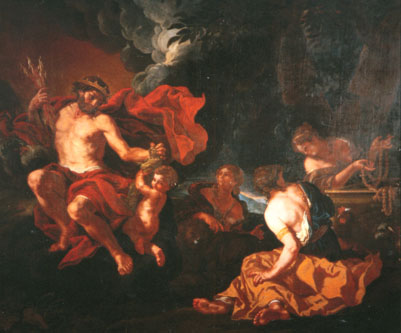
The initial letter “H” in the retrograde version of SEMREH (HERMES) dictated that MM replace Jupiter with his consort Juno (in her Greek avatar, Hera). At Eggenberg “Jupiter appears enthroned on mountainous clouds, dramatically framed by the ample folds of a red cloak that billows in the wind. His raised right hand represents lightning bolts, whilst his left receives a golden statue from a kneeling cherub. At his side are three female allegorical figures with the attributes of lion, lamb and cockerel.” In other words the Eggenberg allegory is utterly conventional, drawn for the ideal Renaissance prince from Vincenzo Cartari’s Imagini degli dei. It is a moral imago of Kindness, Prudence and Benevolence, of Mercy and Magnanimity. Its allegory is political, contemporary and monocultural.
By contrast the HERA stage of the Sentence represents a complex, multilayered, multicultural discourse. As with five of MM’s gods, she links with two others, Hermes and Aphrodite, so that two books, Her and All are half governed by other gods. The HER of HERMES is an amalgam of Athena and Hermes; the HER of HERA is not only Hera but also, in the first book, Shakti, since Hera and her three brothers, Hades, Poseidon and Zeus, who underlie the four books of HERMES, are underlain by four Indic divinities, including Shiva, Vishnu and Brahma. Morever, these latter three divinities preside over three landscape books, also governed by three dynastic types of Chinese landscape painting. None of this precludes a role for western moral values, but MM’s four books are fundamentally intercultural.